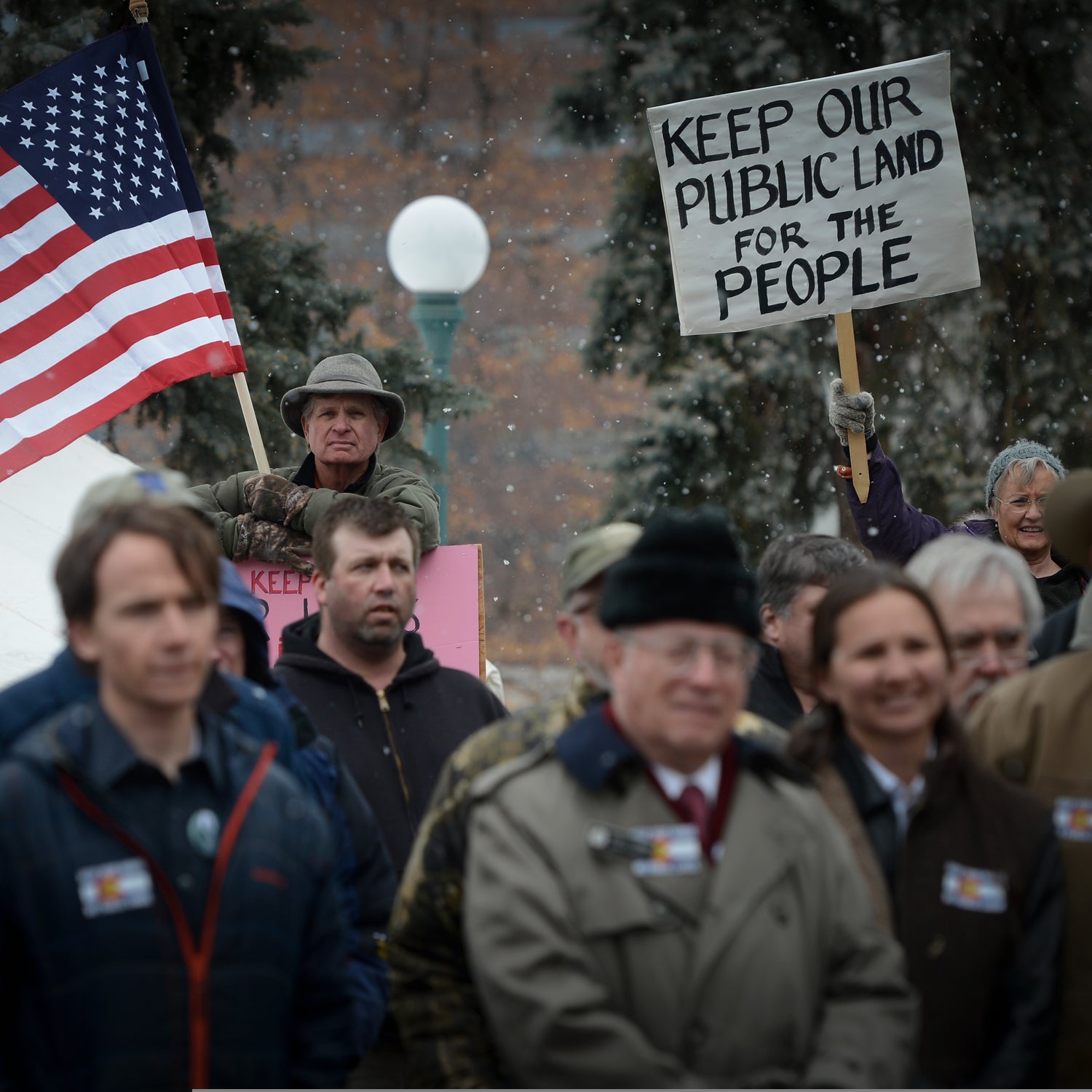Like much of the Western world, I’ve been on a Churchill bender lately. Not because of , which was lackluster, but because of recent books like by Thomas Ricks. Leadership, dignity, courage, truth, and rousing oration resonate in 2018. “Today we may say aloud before an awe-struck world, ‘We are still masters of our fate. We still are captain of our souls,’” said Churchill in his most famous address, in 1941.
We could use a little of Churchill’s stirring prose at the moment, especially those of us who care about sustainability and public lands. The environment hasn’t been attacked like this since James Watt, President Reagan’s secretary of the interior, said, “If the troubles from environmentalists cannot be solved in the jury box or at the ballot box, perhaps the cartridge box should be used.” As chaotic as the past 15 months have proven, the Trump administration’s anti-environmental cartridges were certainly laid out with care. One bullet for research, another for the Paris climate accord, a third for clean energy, a fourth for offshore drilling regulations, a fifth for reductions of toxic emissions, and a dumdum bullet for our national monuments.
Currently, environmentalists and conservationists are channeling their inner David Brower and getting pugilistic to limit the damage. But as Brower told John McPhee when conservation was young, these battles are cyclical. The people—the majority of whom overwhelmingly vote in favor of conservation—can also counterpunch. When that bright day arrives and we remember that public lands are for the public, conservationist voters need to reexamine the ways we fund open space, parks, and trails in this country, because the current system is a mess.
On the federal level, funding depends on the (LWCF), a 1965 act that, in theory, sets aside $400 million annually in oil and gas royalties. In reality, at best $100 million of that money has ever been released and almost all those funds go to acquisitions by federal agencies like the National Park Service. Important stuff, but of no help for more localized planning. Under Trump, the LCWF has been on life support, forcing conservation groups to lobby merely for its reinstatement instead of pushing to buy and fund public lands with its proceeds. But even if all those dollars were released, nothing would fundamentally change for conservation. The LCWF’s $400 million is a pittance when it comes to acquiring lands on a national scale.
The environment hasn’t been attacked like this since James Watt, President Reagan’s secretary of the interior, said, “If the troubles from environmentalists cannot be solved in the jury box or at the ballot box, perhaps the cartridge box should be used.”
The real action is at the state and local level, where 70 to 80 percent of conservation funding is generated. Wealthy states (California) and states with bigger recreation economies (Montana) tend to collect more funds and protect more lands, but after that, no blanket statements apply to taxpayer-funded conservation. Every state and city has its own approach. In 2008, Minnesota voters agreed to a state sales tax that will generate $7.5 billion for conservation over 25 years. California voters will decide on a $4.1 billion state parks bond in June. In Georgia, the has supported a proposed sales tax on sports equipment that could deliver $400 million for conservation efforts over 20 years. At the more local level, you have cities like Denver or counties like Gallatin in Montana that impose taxes or agree to bonds to raise $10 million to $40 million at a time. And finally, you have private conservation easements, though most of those lands remain closed to the public.
The result of all these piecemeal strategies is a helter-skelter jumble that ebbs and flows with the health of the economy and the whims of the political parties in charge. If you agree with Tim Wohlgenant, chief operating officer of the , that conservation is a basic human right and that it must grow with the population as a hedge against rampant development, then conservationists need to rethink how they raise cash.
Colorado, which has tapped the state lottery for funds since a constitutional amendment was passed in 1992, is often held up as a promising model. Here’s how it works: For every lottery ticket sold, the store takes a small cut (about $15,000 annually for a busy retailer in Colorado), about 5 percent of the gross (14 cents of a Powerball ticket) goes to the state lottery commission charged with running the lottery, and, of course, the winner cashes out. But as with mob numbers, the house always wins. In Colorado, 50 percent of the remaining money goes to (GOCO), which gets an additional $1.70 in matching funds as it farms it out projects around the state. Forty percent goes directly to the Conservation Trust Fund, which allocates it to 470 local governments for the acquisition of public lands. And 10 percent goes to Colorado Parks and Wildlife.
The lottery is a winner for conservation. In 1992, GOCO took in $37 million; by 2017, that number was $65.7 million. And conservation is a winner for Colorado. According to a recent , the projects funded by the lottery have generated some $507 million over the past decade in the form of the recreation economy. All this is done, according to the Colorado Lottery, using no taxpayer funds.
Now the downside. As both conservatives and progressives will tell you, the lottery is a regressive tax. Meaning the less money you make, the more you pay. , half of all lottery tickets are purchased by the poorest one-third of Americans. It’s called the “desperation hypothesis.” Poor people buy lottery tickets out of hope, not entertainment. Even if the conservation resources are spread across all communities—which, in Colorado, they are—the lottery is still a predatory tax. On top of that, Outdoor Industry Association research tells us that rich, college-educated white people take advantage of protected lands in far greater numbers than the poor and people of color.
The people are recognizing that, just like education, security, freedom, and, hopefully, health care, access to public lands, trails, paths, and city parks is a basic human right.
Florida, of all places, might have the best framework for generating conservation revenue. Back in 1963, the Sunshine State placed a tax on real estate transactions so that, as the population grew, so too would public land acquisition. Brilliant, right? And the program worked swimmingly until the real estate–fueled Great Recession of 2008, which also ushered in a regime change in the state legislature and the governor’s mansion. In Florida, which is growing by a thousand people a day, the new attitude, says Will Abberger, director of Conservation Finance for the Trust for Public Land, is that “the state doesn’t need to own anymore land.”
As is often the case with funds earmarked for conservation, the state redirected the money. It took 1 million signatures collected in 2013 to get a measure on the ballot to return the real estate tax funds to conservation. But, says Abberger, “the legislature again thumbed their noses at the voters.” The money was used for environmental projects like Everglades restoration and campground management, but not a dime went to the purchase of public lands until this past March, when the legislature finally freed $100 million (of $806 million in conservation tax revenue) to the cause.
Warts and all, though, Florida is a good model. At least it’s taxing the right people. But before you try to sell your state on a real estate tax, know this: Georgia tried a similar amendment recently, and lobbyists for the real estate and construction industries crushed it with huge ad buys.
So where does conservation go from here? The truth is there is no simple fix, but voters clearly have the power and motivation to support the effort. Conservation was once an elitist concept, but the trend today is moving toward conservation equity. Fully half of the Trust for Public Land’s initiatives are now in cities, says Wohlgenant. And in the last election—the one that brought us Trump, Truitt, Perry, and Zinke—80 percent of TPL’s ballot initiatives passed. The people are recognizing that, just like education, security, freedom, and, hopefully, health care, access to public lands, trails, paths, and city parks is a basic human right. Conservation needs to be funded accordingly.
Who knows, it just might suture the rift that divides us, too. “Our national public lands tell the story of our nation,” Wohlgenant says. “They bring us together. They are our common ground.”
The country isn’t there yet, but it’s getting there. And we are still masters of our fate.


